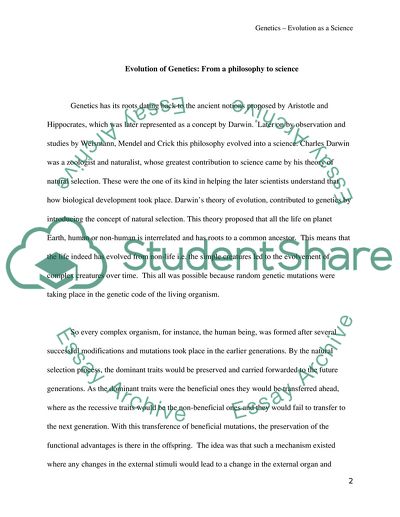Cite this document
(Evolution of Genetics: From Philosophy to Science Essay Example | Topics and Well Written Essays - 1500 words, n.d.)
Evolution of Genetics: From Philosophy to Science Essay Example | Topics and Well Written Essays - 1500 words. https://studentshare.org/biology/1567772-describe-the-contribution-charles-darwin-august-weismann-gregor-mendel-and-frances-crick-have-made-to-the-study-of-genetics
Evolution of Genetics: From Philosophy to Science Essay Example | Topics and Well Written Essays - 1500 words. https://studentshare.org/biology/1567772-describe-the-contribution-charles-darwin-august-weismann-gregor-mendel-and-frances-crick-have-made-to-the-study-of-genetics
(Evolution of Genetics: From Philosophy to Science Essay Example | Topics and Well Written Essays - 1500 Words)
Evolution of Genetics: From Philosophy to Science Essay Example | Topics and Well Written Essays - 1500 Words. https://studentshare.org/biology/1567772-describe-the-contribution-charles-darwin-august-weismann-gregor-mendel-and-frances-crick-have-made-to-the-study-of-genetics.
Evolution of Genetics: From Philosophy to Science Essay Example | Topics and Well Written Essays - 1500 Words. https://studentshare.org/biology/1567772-describe-the-contribution-charles-darwin-august-weismann-gregor-mendel-and-frances-crick-have-made-to-the-study-of-genetics.
“Evolution of Genetics: From Philosophy to Science Essay Example | Topics and Well Written Essays - 1500 Words”. https://studentshare.org/biology/1567772-describe-the-contribution-charles-darwin-august-weismann-gregor-mendel-and-frances-crick-have-made-to-the-study-of-genetics.


